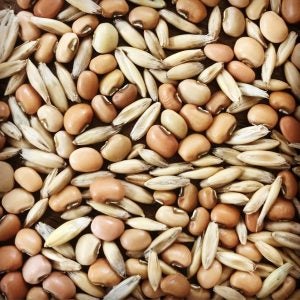Cover crops are no longer a trendy buzzword in agriculture. In many Midwest states, it was the third largest crop behind corn and beans. It is predicted that the United States will have 20 million acres of cover crops by the year 2020. It is a soil health revival with American farmers motivating one another and practicing sustainability to leave a legacy farm.
Do you want to join the conversation, but don’t know how to get started? If you are still trying to evaluate how to get started planting cover crops, here are five steps you need to take:
1. Identify the goal you are trying to achieve with cover crops
Establish a measurable goal. The most frustrating conversation I have is when a farmer says, “I tried cover crops. They didn’t work.” My response, “What were you trying to achieve when you planted your cover crops?” About 99.9 percent of the time this conversation ends with, “I don’t know … (long pause while they think of something they read recently that might make this a smart answer) … soil health!” Good buzzword choice. You should always, always, always establish a goal before you order the seed.
The most common goals people choose are:
- Suppressing weeds
- Sequestering nutrients
- Reducing compaction
- Controlling erosion
- Producing nitrogen
- Sustaining and increasing organic matter
- Increasing microbiology traffic
- Providing a forage for haying, chopping, or grazing
- Providing a pollinator or wildlife habitat
2. Start small and use the K.I.S.S. method … (Keep It Simple, Stupid)
As a first-time cover cropper, you’ve probably been motivated and inspired by something you’ve seen in a presentation, locally grown, or on the internet. For beginners, I hand out “garden packets” at farmer field days and our local farmer’s market. It’s a 5-ounce package of an oats and radish blend. Oats and radishes are a popular blend for farmers managing a lot of acres or acres that tend to stay wet in the spring. It’s a multi-species mix, winterkills, can achieve many goals listed above, and will grow if it is planted in the ground or on top of the ground. The garden packets are great because it allows rural and urban growers to see how integrating cover crops into something as simple as their gardens, can improve their soil health. The main message is don’t try to reinvent the wheel. Keep it simple because simplicity works. A rookie planting his smaller fields with oats, radishes, and/or rye will look more intelligent in the spring than a rookie with a messy cocktail mix in the that he doesn’t know how to manage in May.
3. Find a trusted seed supplier
The small seed world isn’t quite as regulated as the corn, bean, and cotton world. If the deal seems too good to be true, you probably need to check the seed tags for their germ and purity. Another question to ask your trusted seed supplier is the price/pound. Rye is sold in 50#, 56#, 60# bags, 2000# and 2240# totes throughout the country. Seed coatings also get tricky. Clay, limestone, fungicides, water polymers, and inoculants could drive your price up or down depending on the coating. Make sure you compare apples to apples.
4. Watch your timing
Timing is the No. 1 issue with cover crops. Getting your cover crops established in the fall is just as important as timing the termination in the spring. Be sure to plan your herbicides and manage their residuals before you plant your cover crops. We do not want you to pay the money for the seed just to learn you had herbicide carryover that destroyed the germination.
5. Manage your cover crops!
Don’t plant your cover crops and forget about them. Walk your fields. Dig up roots or soil pits to see the roots, compaction levels, earthworms, and Mycorrhizae fungi. Monitor your potential pests and your beneficial insects. See how well you managed to reach the goal you established early on. You planted a crop, manage it for the betterment of your future cash crops in that field.
We want everyone to do well with trying their cover crops their first year. Ask folks who have been practicing cover cropping on their farm what they like and don’t like. Understand that every farmer, every farm, every field, every weather pattern, and every year is going to be different. There is no silver-bullet cover crop that will fix your field in year one. It is a journey, not a destination.

Jenna Langley Blue is a regional sales manager for La Crosse Seed in Indiana. You can follow her on Facebook, Twitter, and Instagram.



